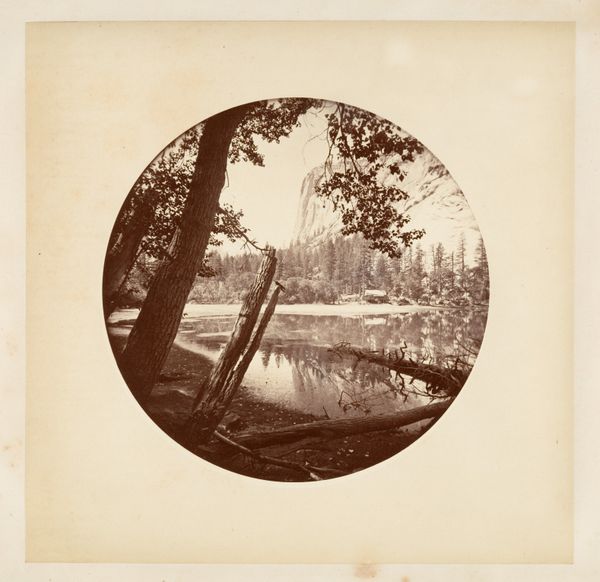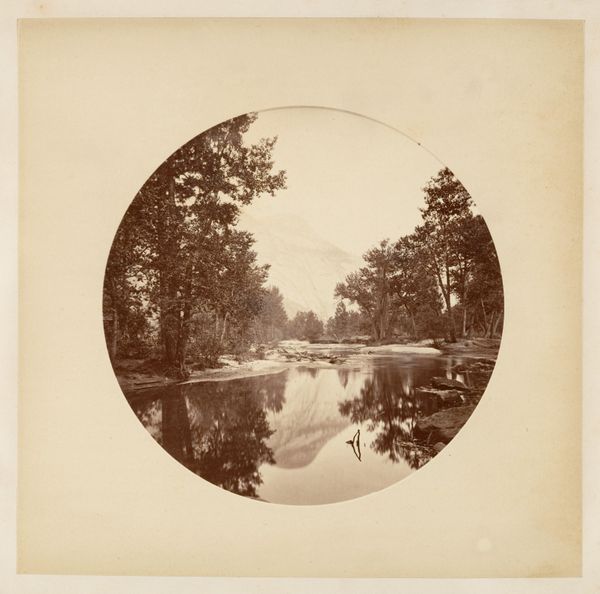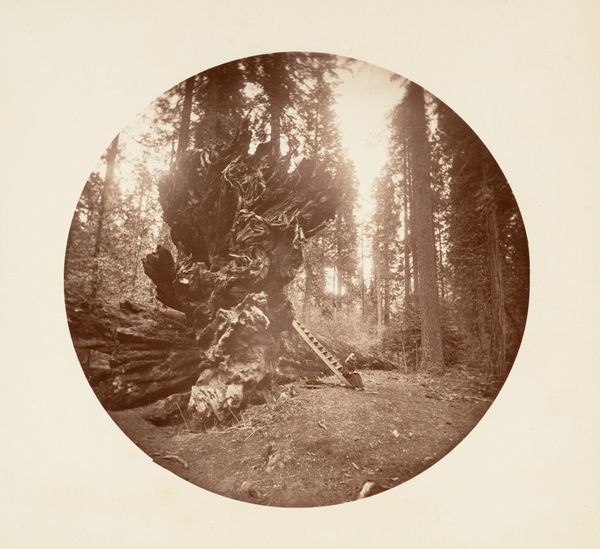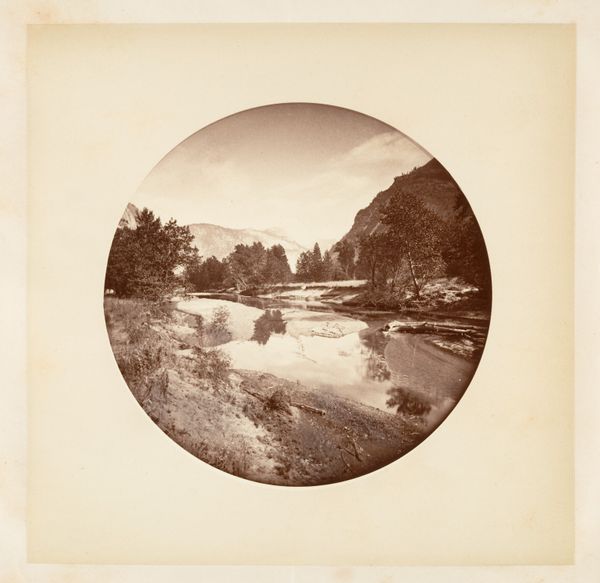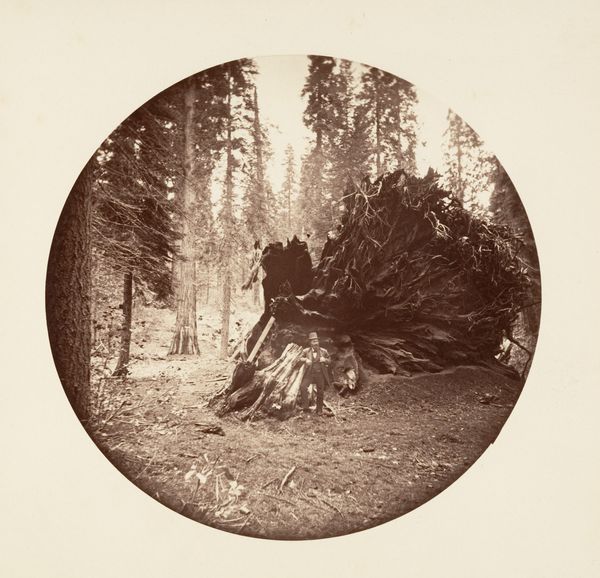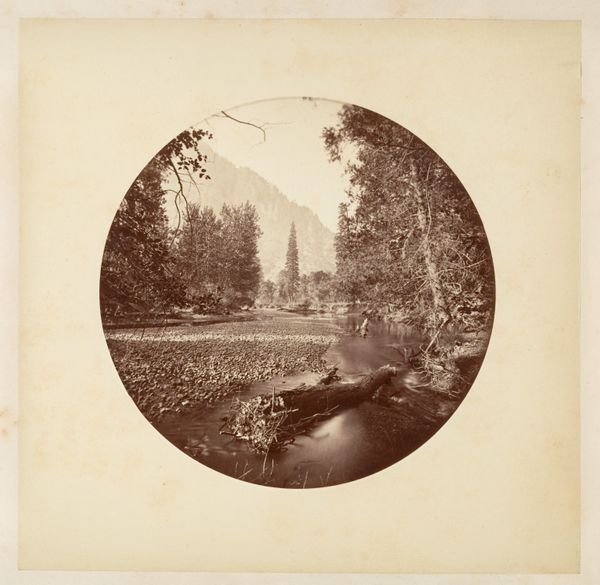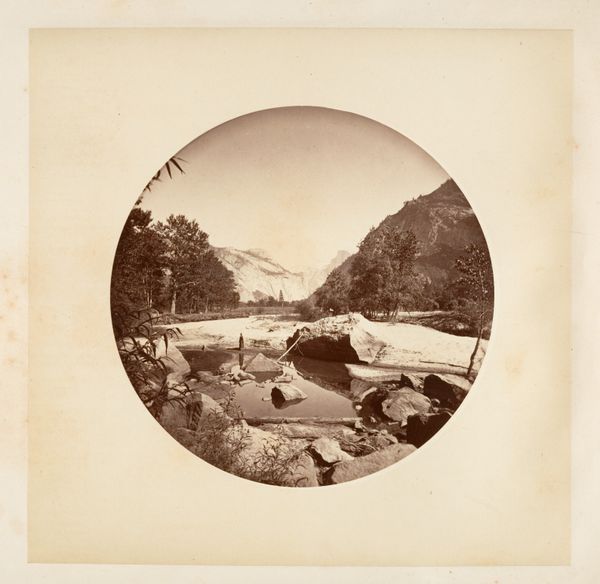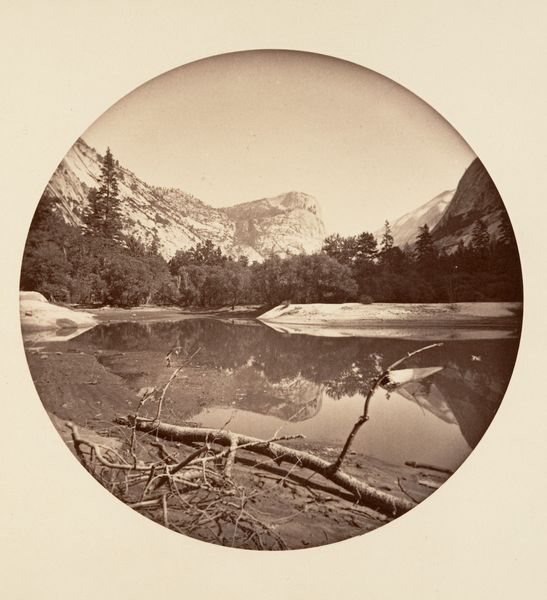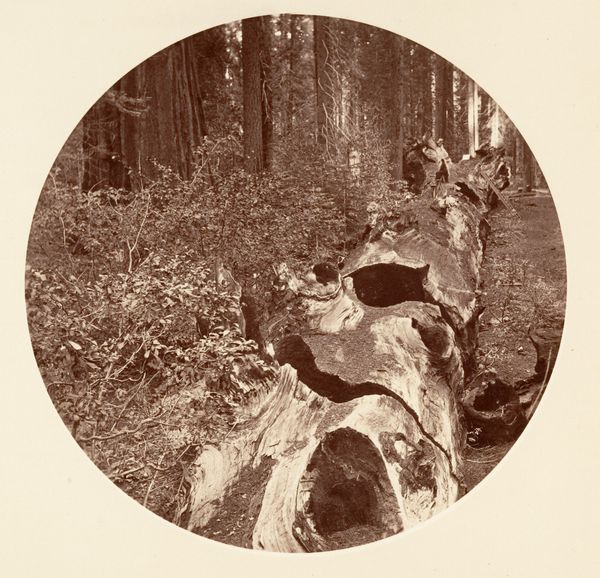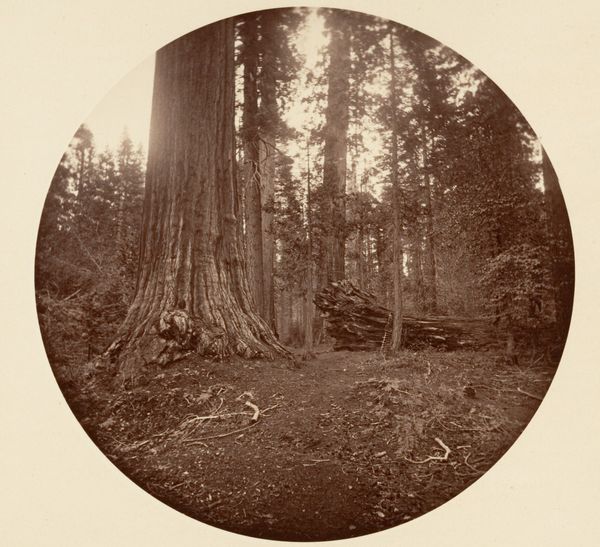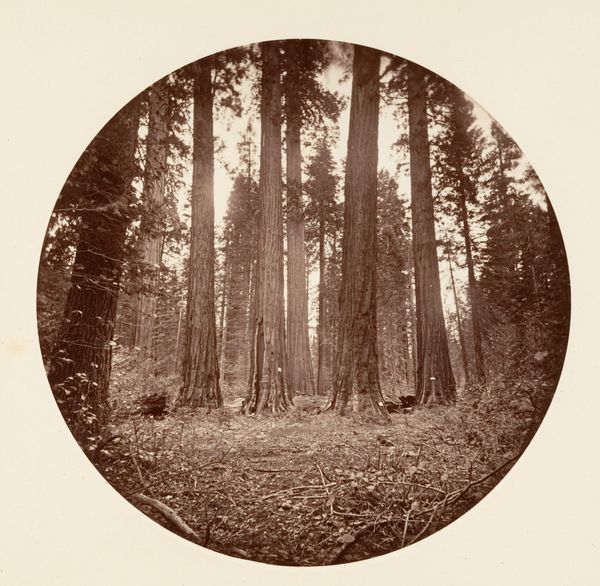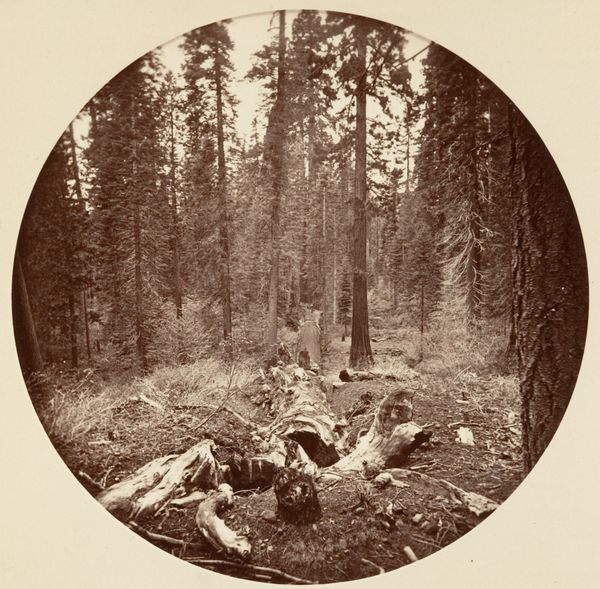![[Yosemite National Park, California] by Carleton E. Watkins](/_next/image?url=https%3A%2F%2Fd2w8kbdekdi1gv.cloudfront.net%2FeyJidWNrZXQiOiAiYXJ0ZXJhLWltYWdlcy1idWNrZXQiLCAia2V5IjogImFydHdvcmtzLzM1ZDA0NzViLTU0OTAtNDNkNi1iY2VmLTZlZTc5YjkyNDFlNS8zNWQwNDc1Yi01NDkwLTQzZDYtYmNlZi02ZWU3OWI5MjQxZTVfZnVsbC5qcGciLCAiZWRpdHMiOiB7InJlc2l6ZSI6IHsid2lkdGgiOiAxOTIwLCAiaGVpZ2h0IjogMTkyMCwgImZpdCI6ICJpbnNpZGUifX19&w=3840&q=75)
Dimensions: Image: 12.5 x 12.5 cm (4 15/16 x 4 15/16 in.), circular Album page: 24 x 25.1 cm (9 7/16 x 9 7/8 in.)
Copyright: Public Domain
Curator: This is a photograph by Carleton Watkins, taken between 1876 and 1880, showing a tranquil view within Yosemite National Park. It's a beautiful albumen print, showcasing his masterful command of the medium. Editor: My first impression is one of quiet contemplation. The circular framing creates a kind of porthole, a concentrated, almost idealized vision of the natural world. Curator: Watkins's work is deeply intertwined with the aesthetic and philosophical underpinnings of the Hudson River School movement. You see this sense of awe before nature’s grandeur. The photograph itself becomes a symbol of unspoiled Eden, almost a religious icon. Editor: Yet, these images also played a critical role in the formation of the national park system, a deeply political act. They served as evidence, as visual arguments for preservation. I am wondering, what narratives are lost when a landscape is deemed 'unspoiled'--especially for the indigenous people who lived there for centuries? Curator: Indeed, there is that duality. Watkins’s photography captured a very specific, constructed version of nature that helped shape a nation’s perception and policies. Consider the formal elements themselves; the placement of the dark trees on the left versus the open lake surface on the right. The composition, the balance... It's very intentional. It guides the viewer. Editor: I am also interested in the fallen trees across the middle ground of the image. They act as both obstruction and a connection between the viewer and the stillness of the scene beyond them. I see a metaphor there--the remnants of disruption existing side-by-side with idyllic beauty. The image's visual language also implies something about America's own complicated, troubled self-image at the time it was made. Curator: Yes! And perhaps on a symbolic level, that broken timber shows both the transience and resilience in the face of so-called 'manifest destiny.' The visual tension suggests layers of meaning. Editor: Looking at this scene again through the "porthole," I’m realizing this image speaks to both our longing for nature and the hard, unavoidable truths about power and place in the 19th-century American West. Curator: Indeed, this reminds us how powerfully photography shaped perceptions, and it’s essential that we explore and question these images even today.
Comments
No comments
Be the first to comment and join the conversation on the ultimate creative platform.

